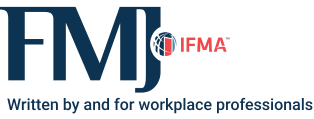Health, Safety & Compliance
The foundations of FM

Facility management is becoming a globally integrated profession, spanning multiple industries, geographies and regulatory systems. Yet across all regions, one common thread is absolute: health, safety and compliance (HSC) must form the foundation of effective FM practice.
Whether a facility manager is managing a hospital in London, a manufacturing plant in Singapore, a school in Washington, D.C., or a corporate tower in São Paulo, FMs carry a basic duty of care: to ensure that buildings and workplaces are safe for end users.
The global regulatory landscape is complex; however, there are similarities across regions. FMs must be aware of these as the foundation of their practice, because failing to do so can have very real consequences.
The human factor
Every day, FMs oversee environments where millions of people work, live and visit. Their decisions regarding maintenance, access or how they support their contractors have broad implications for health and safety.
The cost of failure is a constant globally.
-
Human harm – workplace injuries and fatalities.
-
Financial penalties – fines, litigation and insurance losses.
-
Reputation damage – erosion of trust and dissolution of the social license to operate.
-
Operational disruption – regulatory shutdowns, asset downtime or service interruptions.
As global supply chains and portfolios expand across geographies, FMs must navigate a growing web of complex local laws and regulations. This must be done by considering or applying consistent global principles of risk management and compliance.
The global legal landscape
Common themes across borders
Despite clear local variations, several universal themes exist:
-
Duty of care – all major legislative frameworks impose a basic obligation on those managing workplaces to protect workers and others from harm.
-
Shared responsibilities – duties often overlap between owners, FM providers and contractors. Outsourcing does not remove accountability.
-
Risk-based approach – regulators expect organizations to anticipate hazards and control them systematically, not simply react to incidents.
-
Worker involvement – consultation with workers, unions or safety representatives is a legal requirement in many jurisdictions.
-
Evidence & documentation – inspection records, training logs and audit trails are critical for demonstrating compliance.
Practical implications for FM
Considering the universal themes above, FMs can consider a handful of priority practices to drive clarity and organizational consistency:
-
Embed risk management into asset registers and maintenance schedules. Consider criticality or relevant regulations in relation to specific equipment.
-
Draft clear contracts that allocate safety duties but also require monitoring and performance evidence — remember, legal obligations cannot be totally delegated, and appropriate oversight and supervision must be in place.
-
Verify competence and training of contractors, especially for high-risk tasks (working at heights, electrical work, confined spaces) — stop work if this is unavailable, or until it is delivered to an appropriate standard.
-
Engage workers and contractors in safety dialogue, not just compliance reporting. Engaged people are safe people.
-
Maintain strong documentation — regulators want to see what was done, not just what was promised.
Case study: The Geelong Grammar Slip (Australia)Unfortunately, things can and do go wrong, but it is important to learn from these cases to prevent a recurrence. In 2016, a property manager at Geelong Grammar School (Victoria, Australia) suffered a serious cervical spine injury after slipping in a busy school dining hall. Investigations found that the contractor responsible for cleaning and catering had relied on reactive reporting of spills rather than proactive inspections during peak meal periods. The case resulted in litigation between the State WorkCover Authority and the contractor, with compensation costs exceeding AUD$800,000. Courts scrutinized not only the contractor’s systems but also the responsibilities of the facility owner, illustrating the shared duty of care central to modern Australian law. Lesson for FM globally: reactive systems are not enough. Regulators and courts expect proactive risk identification, ongoing monitoring and documented evidence of compliance, regardless of jurisdiction. |
A global checklist for FM leaders
✔️Map responsibilities across all PCBUs / employers / occupiers.
✔️Translate legislation into KPIs for inspections, maintenance and contractor performance.
✔️Demand evidence of compliance from service providers.
✔️Consult workers and integrate feedback loops into safety systems.
✔️Maintain a live risk and asset register to demonstrate systematic control of hazards.
Conclusion
Health, safety and compliance are the universal foundations of facilities management. While legislation varies around the world, the principle is clear: FM leaders have a duty of care to protect people.
For global FM organizations, success lies in harmonizing compliance systems across multiple jurisdictions while never losing sight of the basic, human objective: ensuring that every person who enters a facility can do so safely.

Read more on Risk Management and Operations & Maintenance or related topics Occupant Safety , Training and Risk Management
Explore All FMJ Topics









